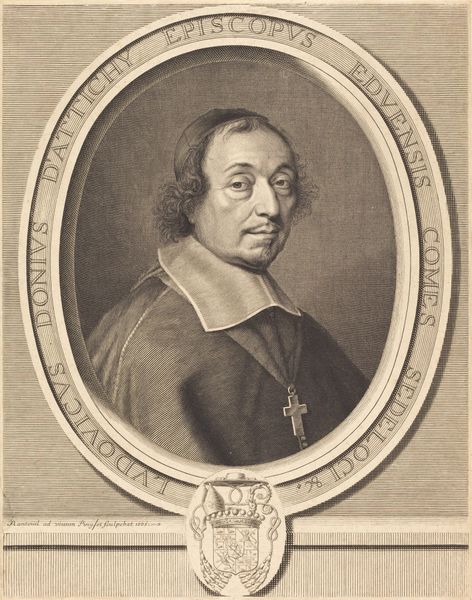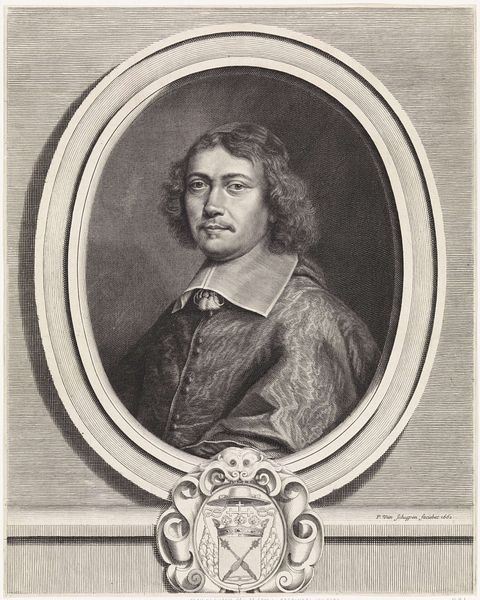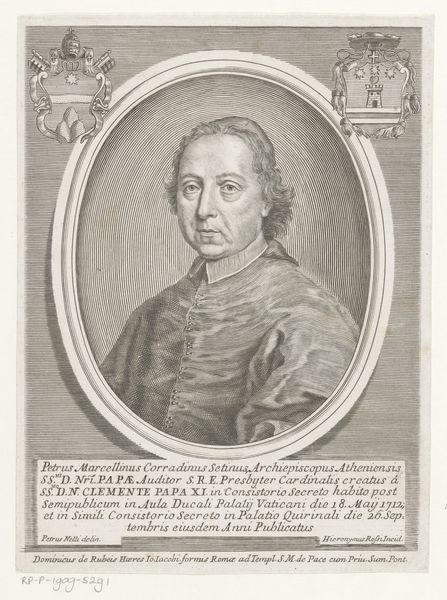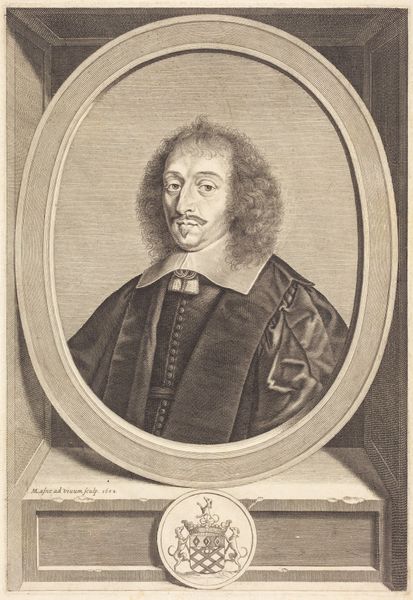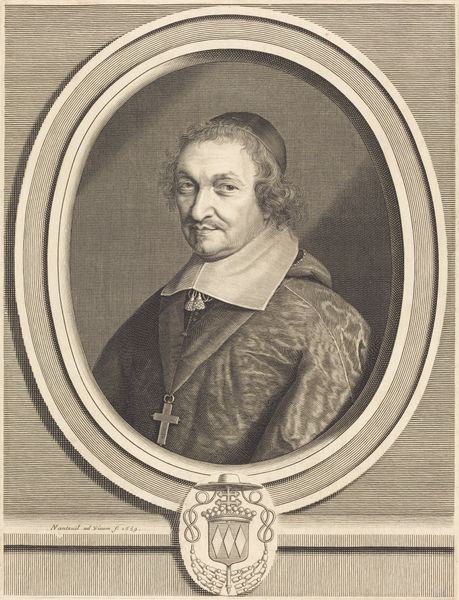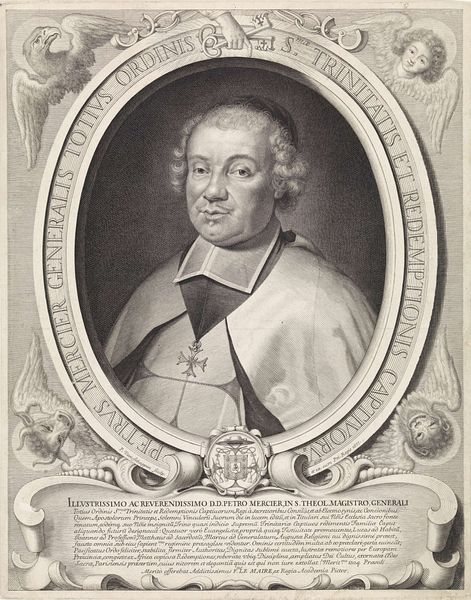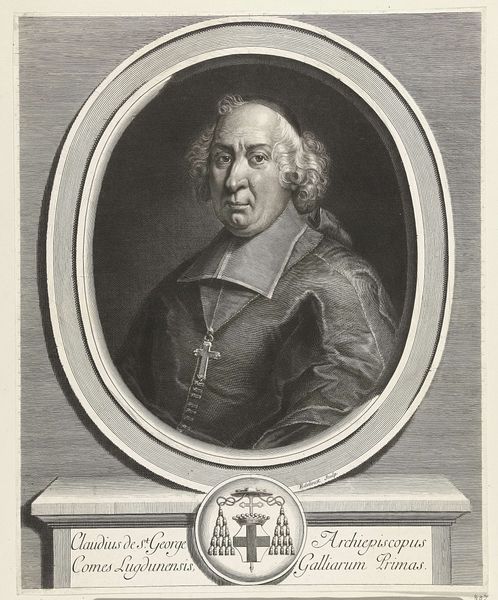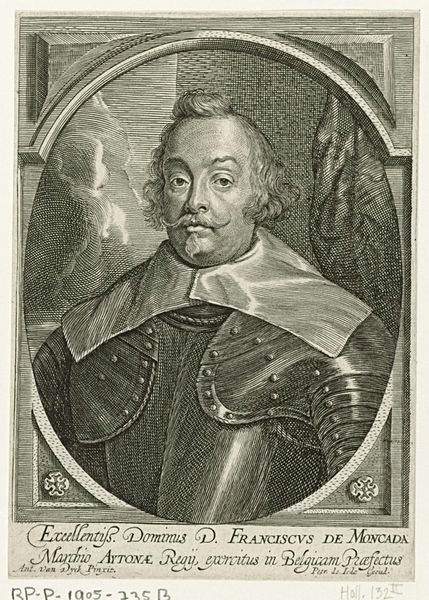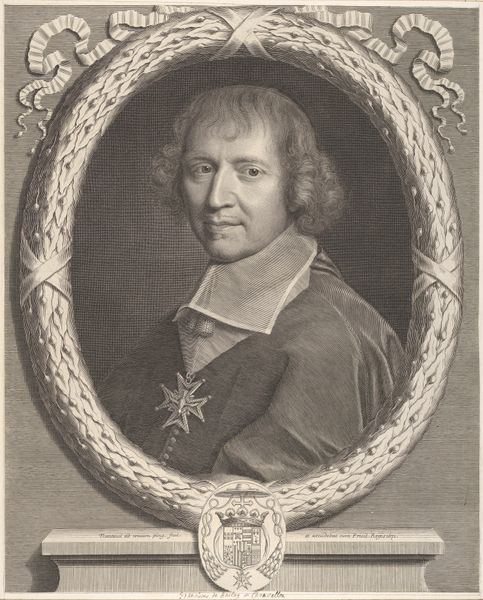
Portret van Antoine de Chasse, grootprior van de abdij van St, Vaast in Arras 1681
0:00
0:00
pietervanschuppen
Rijksmuseum
print, engraving
#
portrait
#
baroque
# print
#
history-painting
#
engraving
Dimensions: height 341 mm, width 270 mm
Copyright: Rijks Museum: Open Domain
Curator: This engraving, crafted in 1681 by Pieter van Schuppen, depicts Antoine de Chasse, the Prior Major of the Abbey of St. Vaast in Arras. It is now held in the collection of the Rijksmuseum. Editor: My initial reaction is a feeling of constrained power. He is visually confined, not only by the oval border but by the heavy ornamentation and, frankly, by the man’s very presence, which conveys the immense weight of his social position. Curator: Precisely! The elaborate Baroque frame with its Latin inscription certainly underscores that weight, reflecting both his status within the Church and the broader sociopolitical climate of the era. These images played a key role in consolidating power. Editor: Absolutely. Looking at the minute details—the intricate lines of the engraving that attempt to capture the sheen of his robes, the subtle shading of his face—I can almost sense the hours devoted to crafting and consuming such imagery. Curator: Yes, the technique itself mirrors the social hierarchies being represented. Engraving allowed for multiples, spreading his image and, by extension, the authority of the Abbey, further. The politics of imagery indeed! Editor: And what do we make of his gaze? He stares out, but there is no real connection being offered, at least not for a contemporary viewer. I see institutional strength but struggle to find vulnerability, let alone common ground. It’s an image consciously built, a constructed presence. Curator: I agree. His very identity is inseparable from his position. What this artwork does effectively, though, is reinforce the hierarchical structure of the Abbey within the broader European societal order. It shows, through its subject and dissemination, the institutional reach. Editor: Considering its place within the museum now, the print serves as an artifact ripe for modern reinterpretation. This can allow us to challenge some historical systems and the imbalances reflected within artworks of this era. The visual narrative prompts us to question who gets remembered, how, and why. Curator: Indeed, art continues its engagement with society by inviting those very dialogues and opening our eyes to the ways in which power dynamics were and still are perpetuated through portraiture. Editor: It leaves us with questions that far outlive Antoine de Chasse, the Abbey of St. Vaast, and even Van Schuppen. Curator: A powerful print to analyze, one that goes far beyond a man and an oval.
Comments
No comments
Be the first to comment and join the conversation on the ultimate creative platform.
